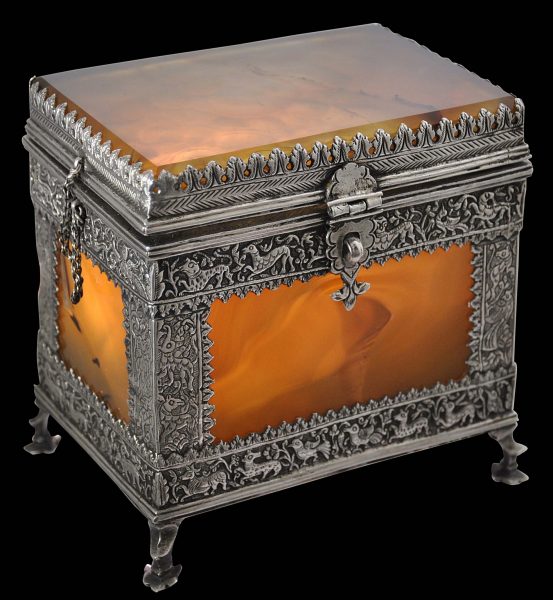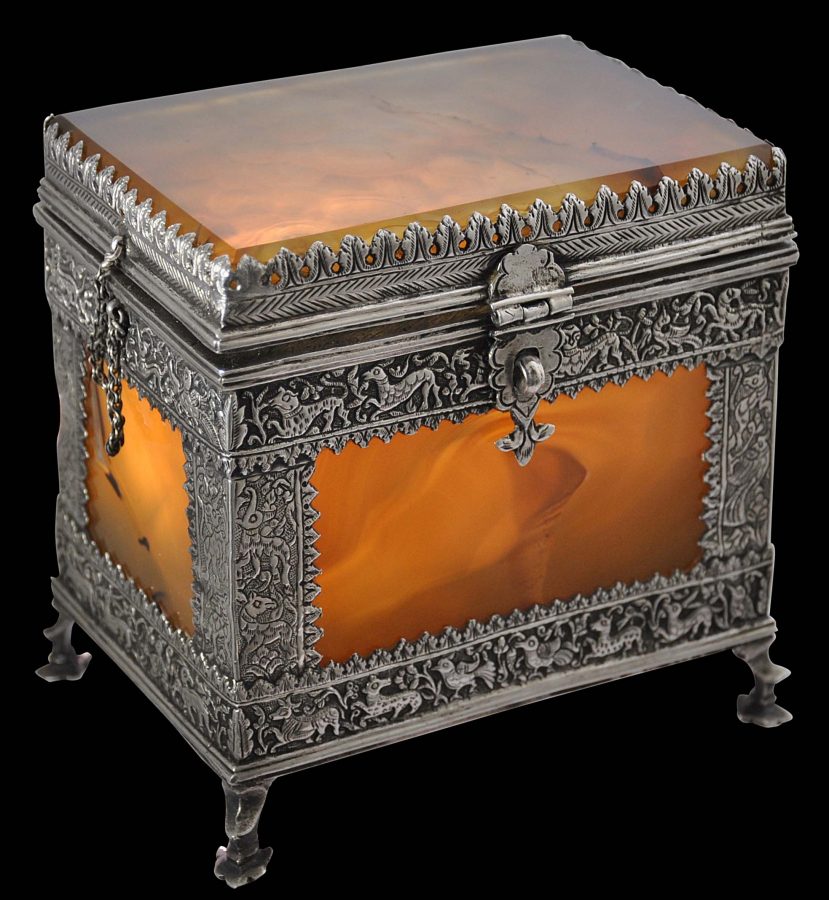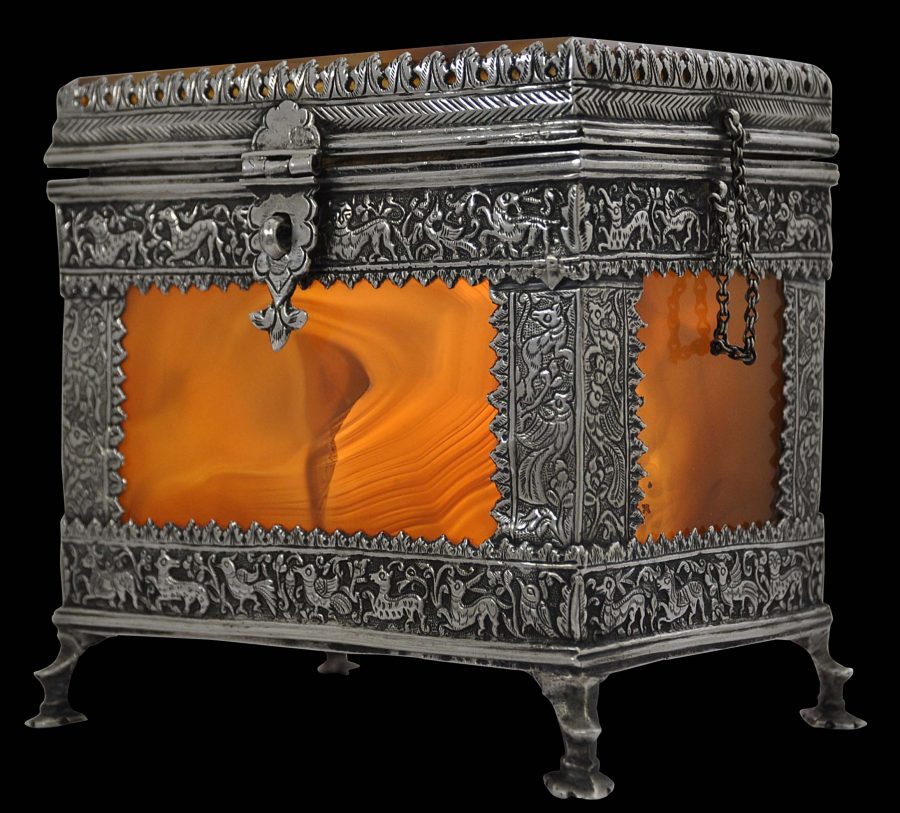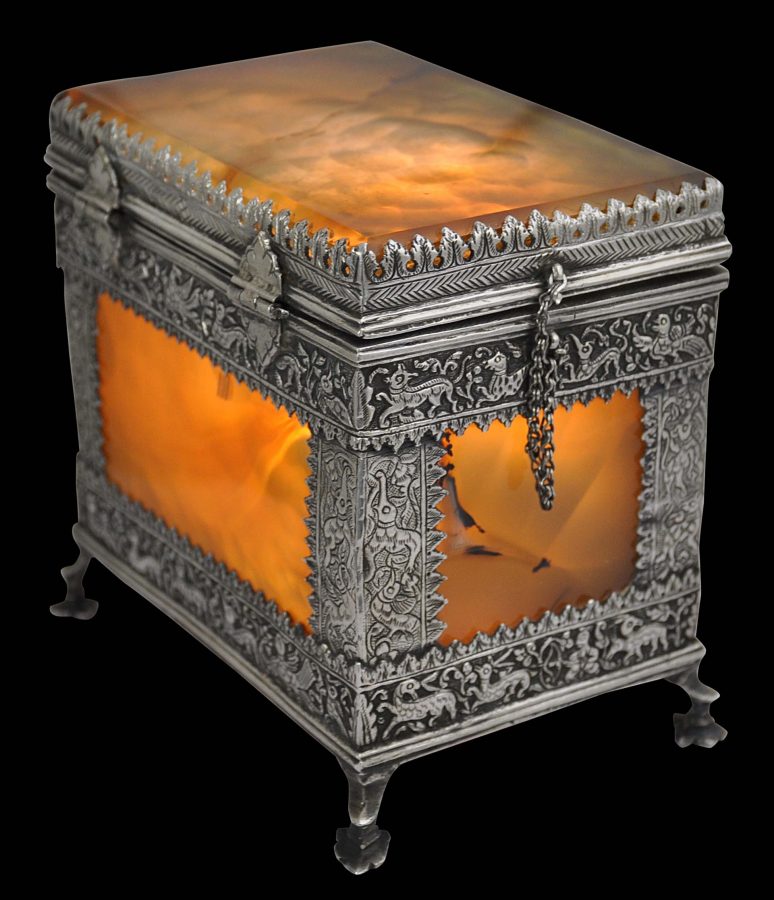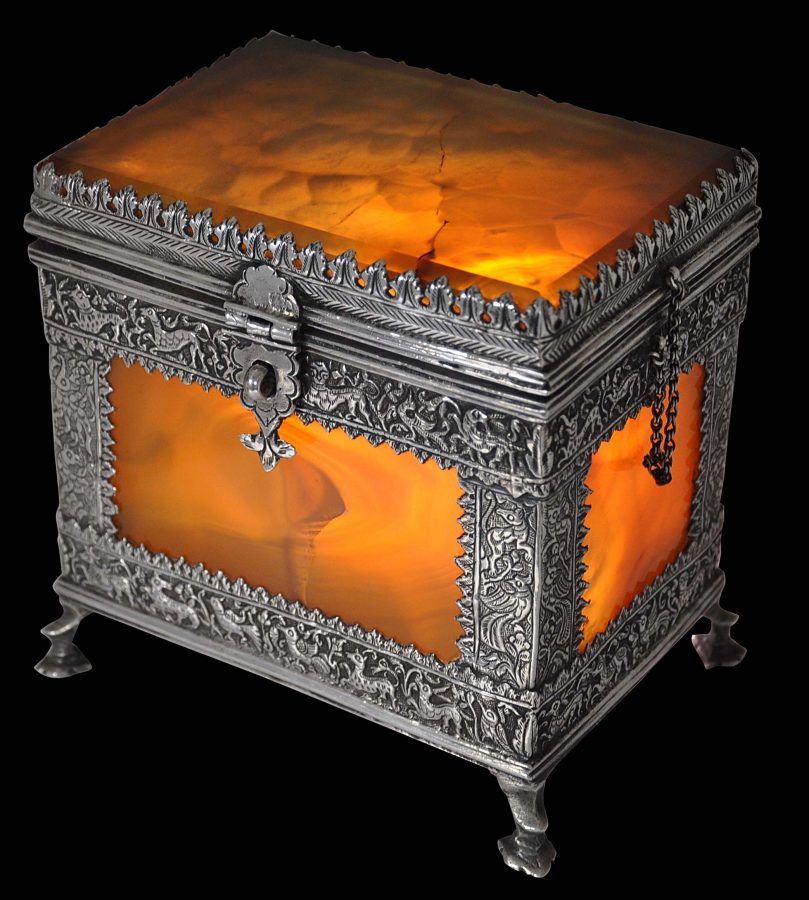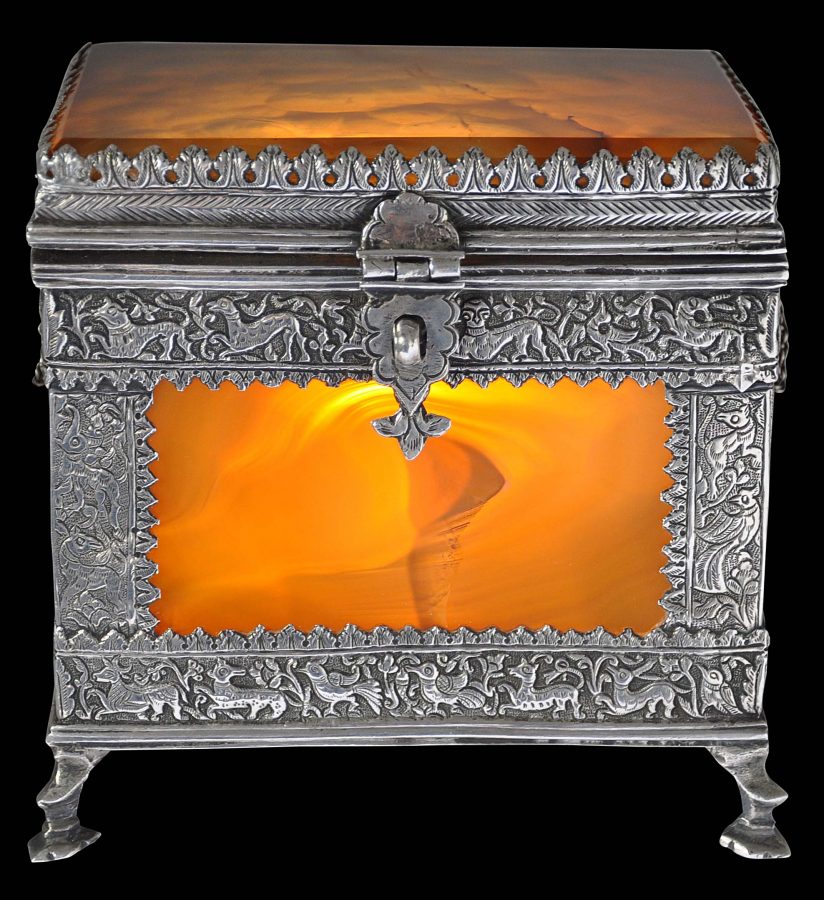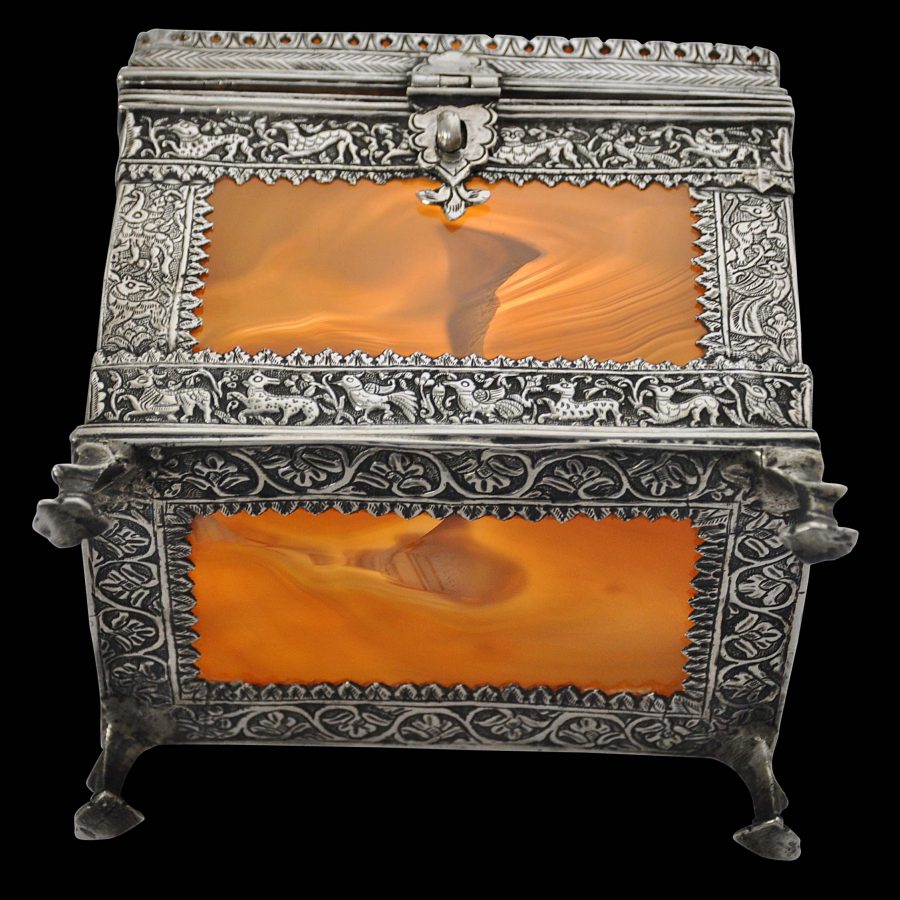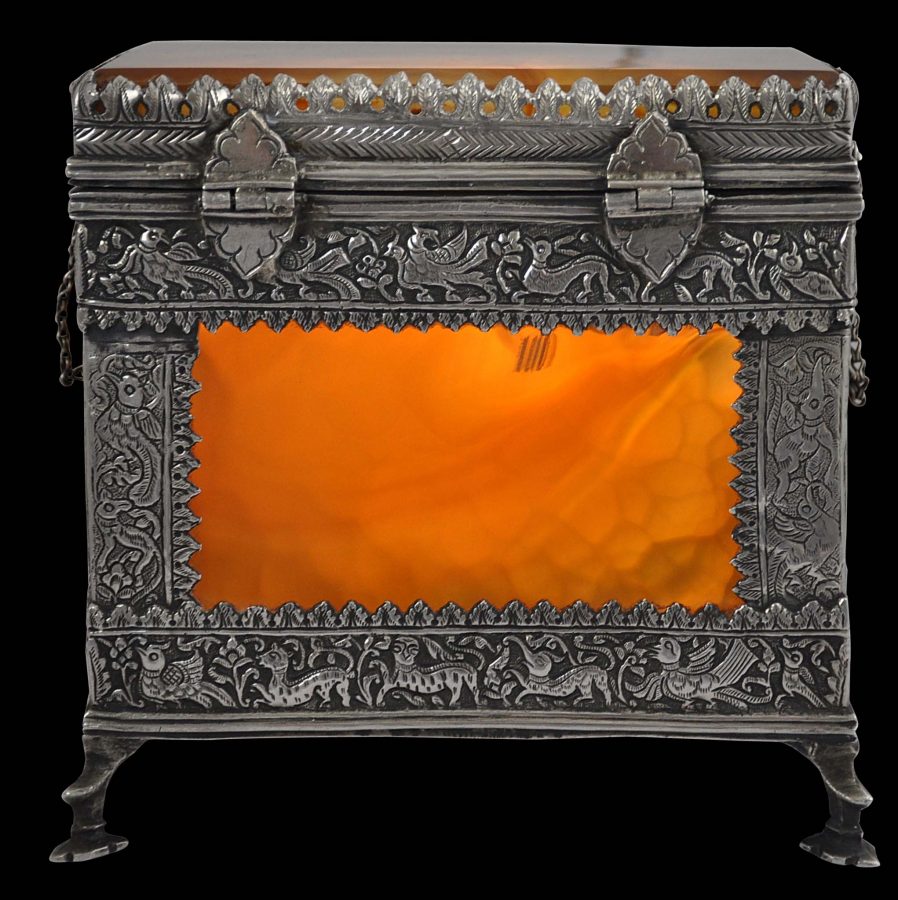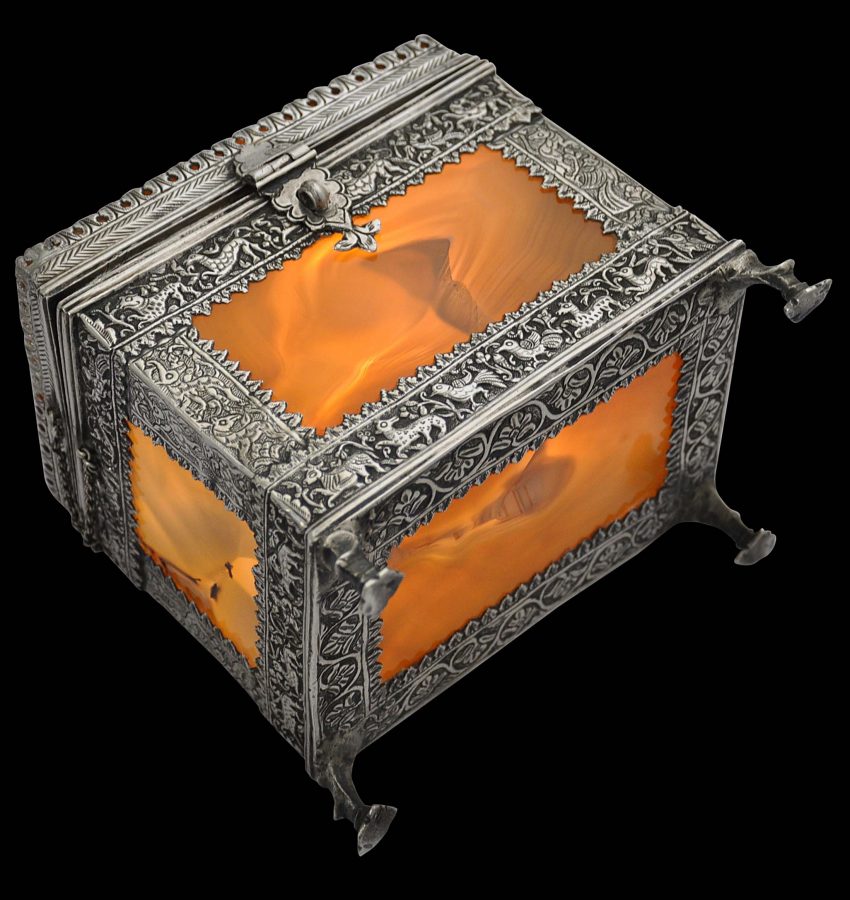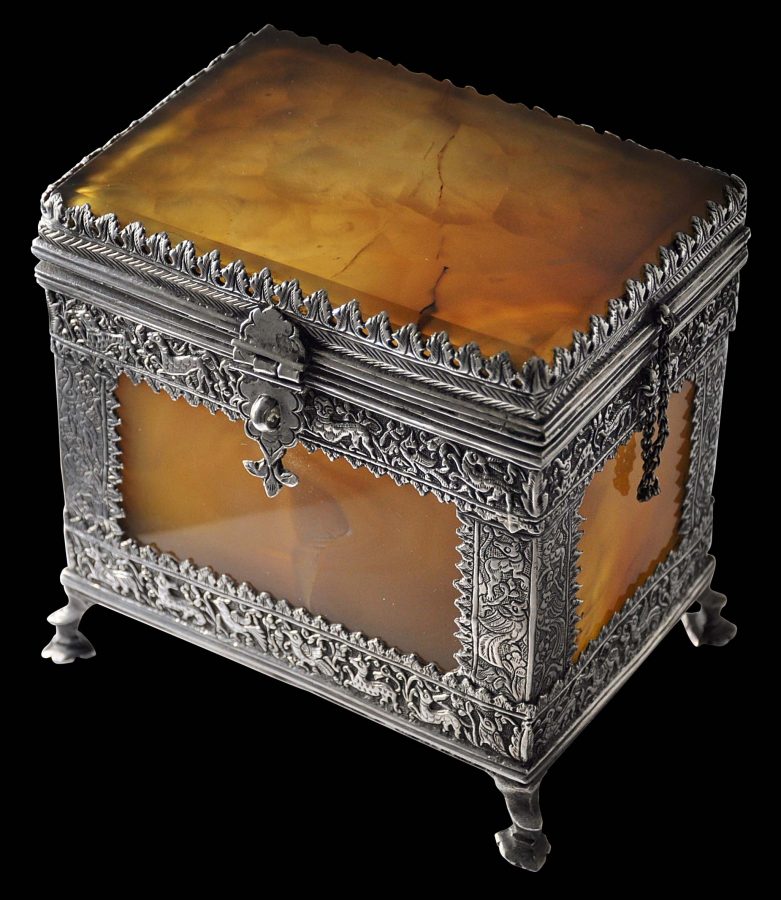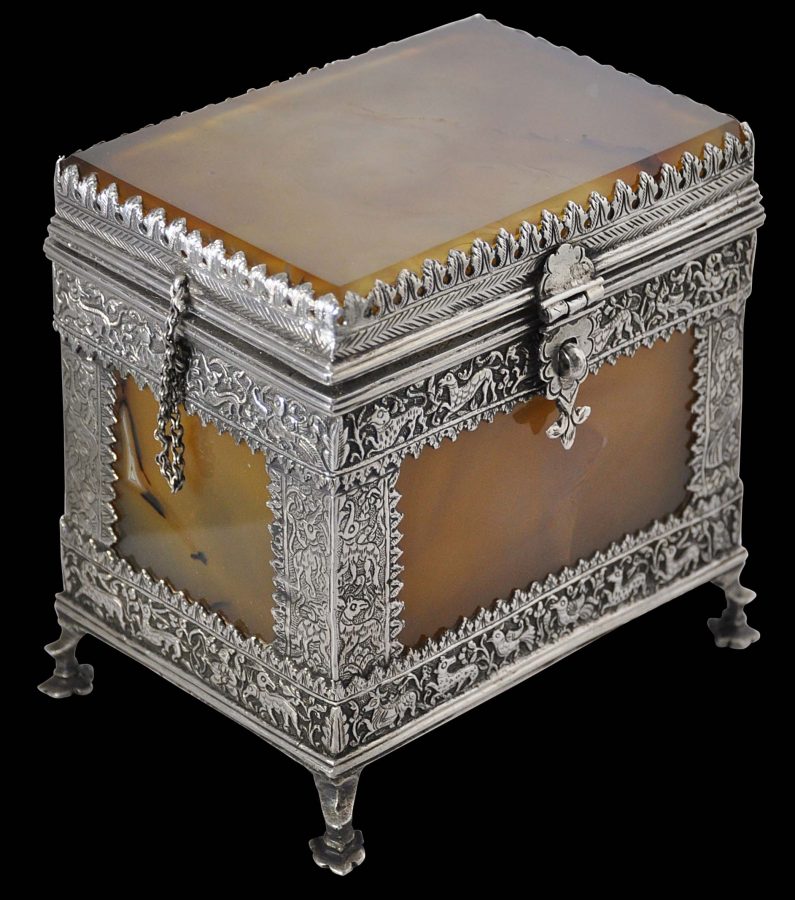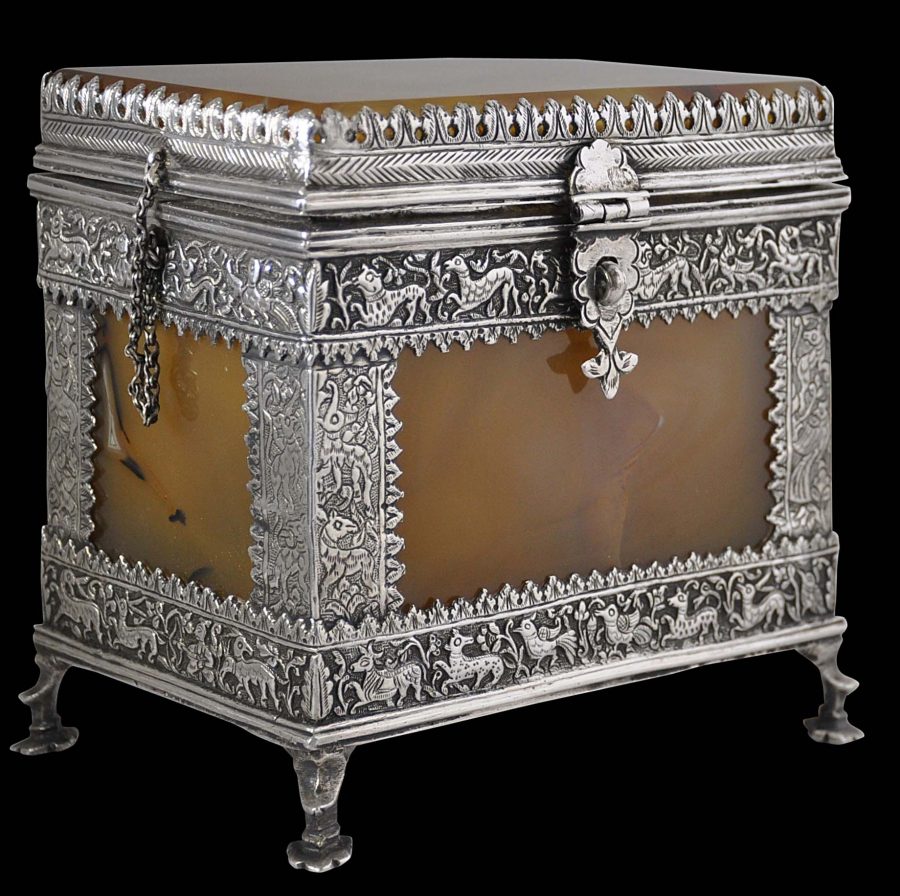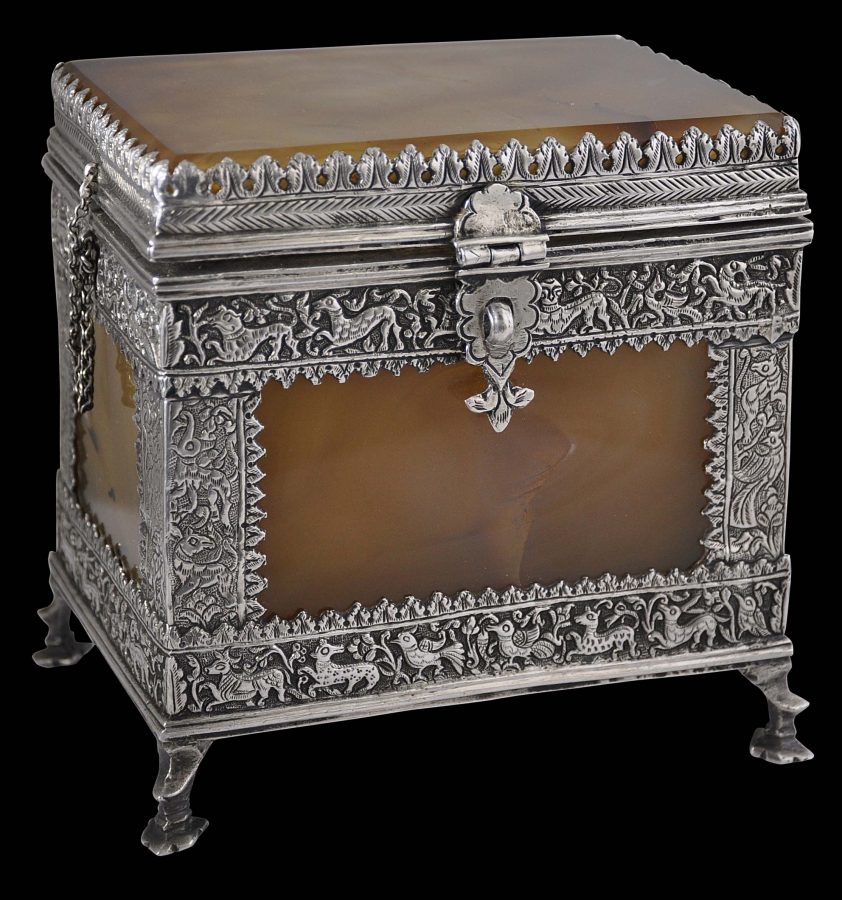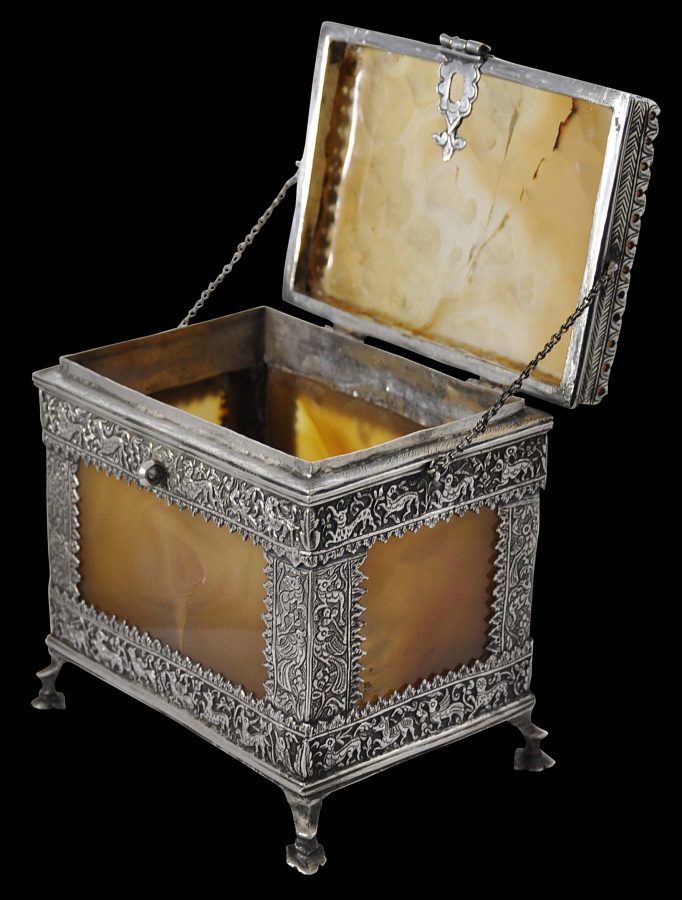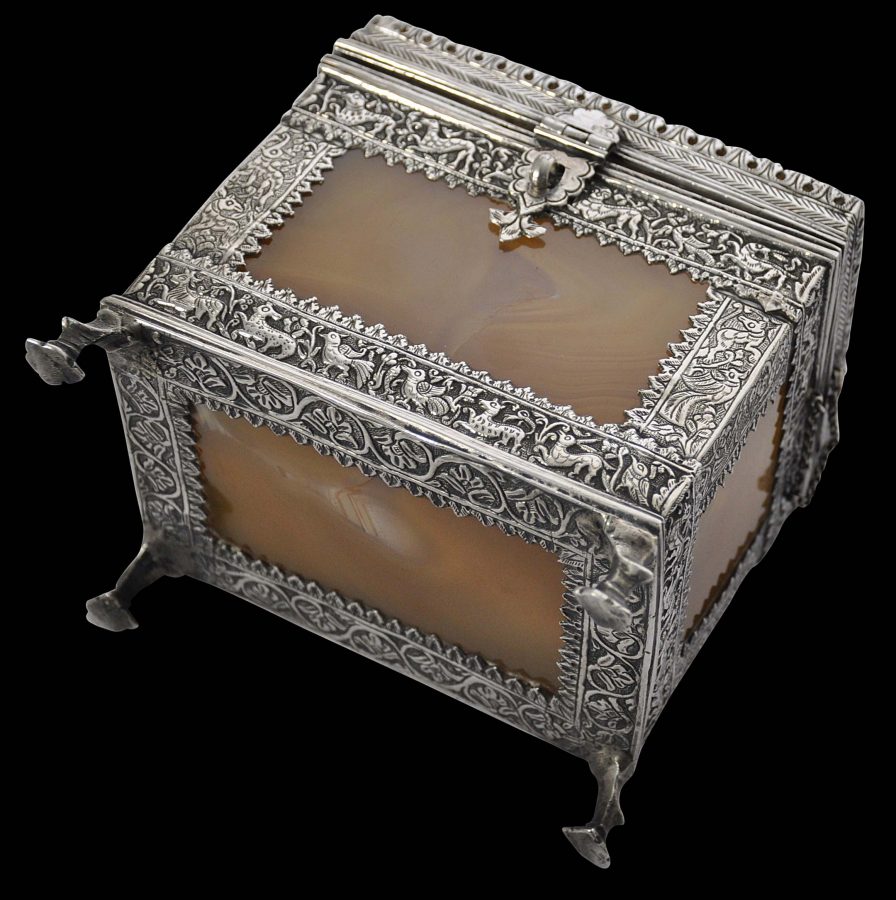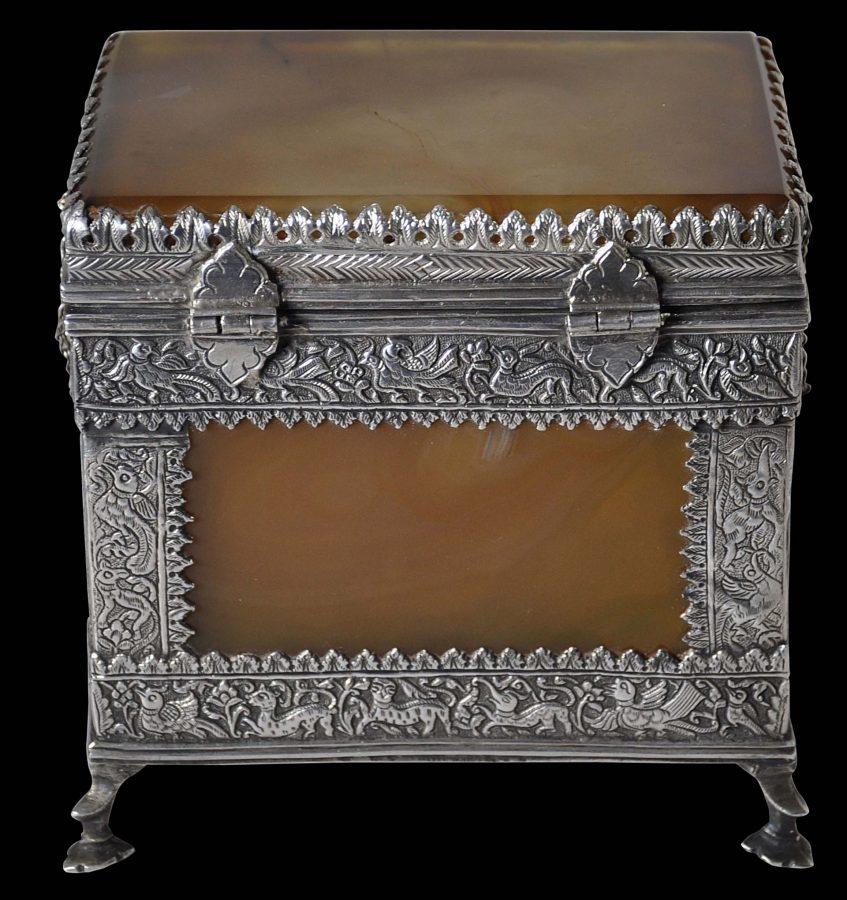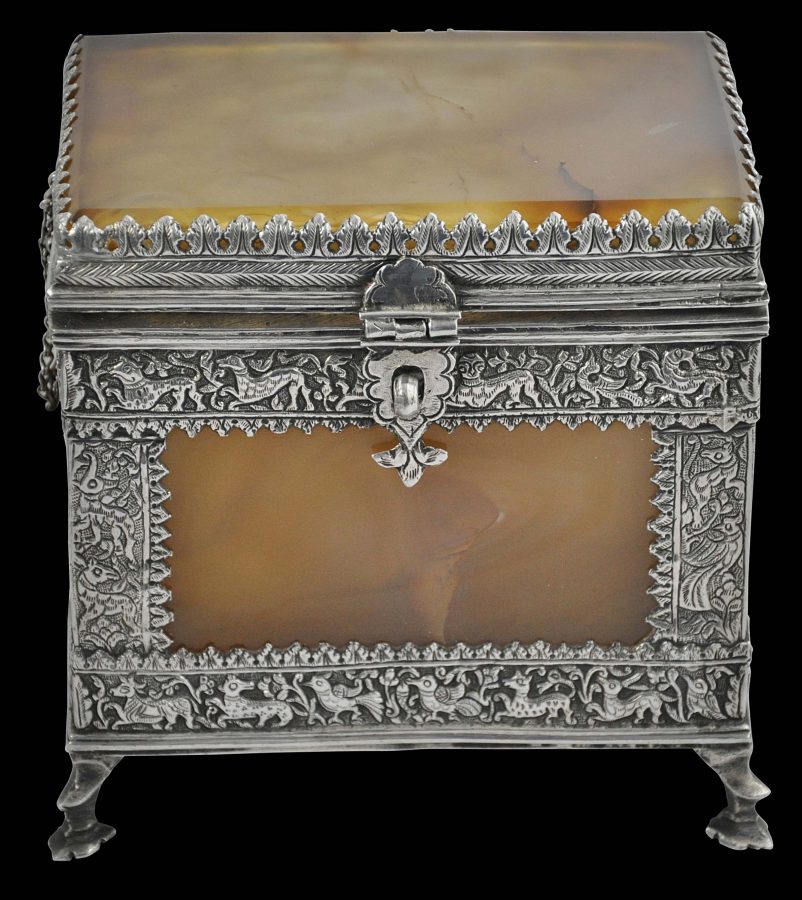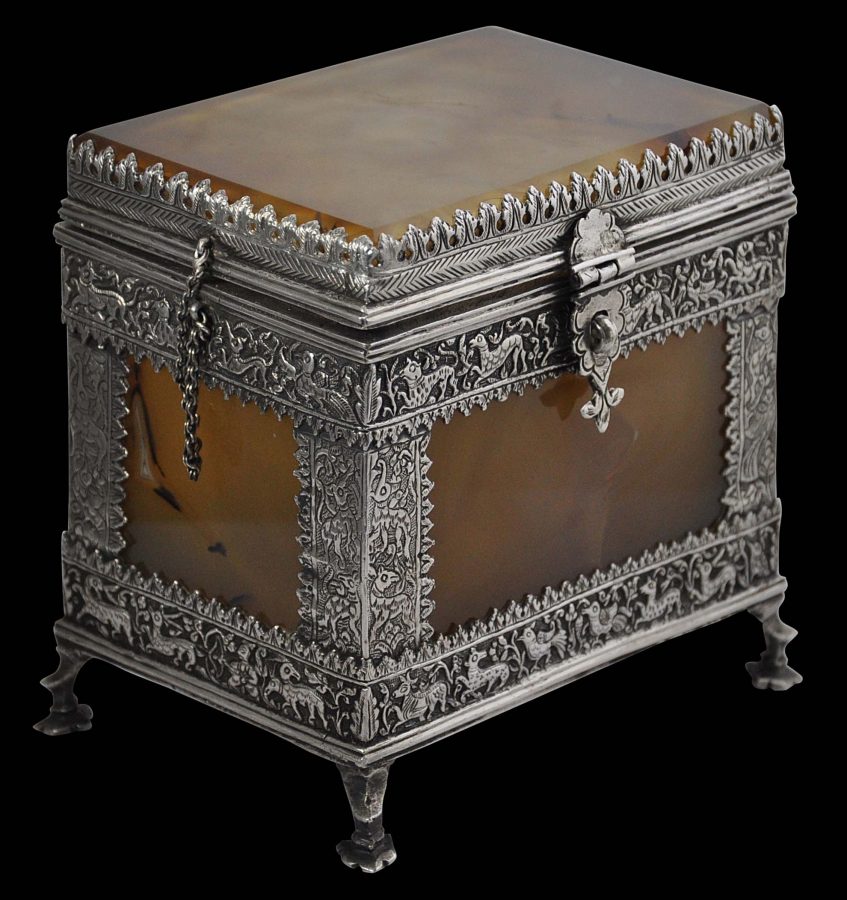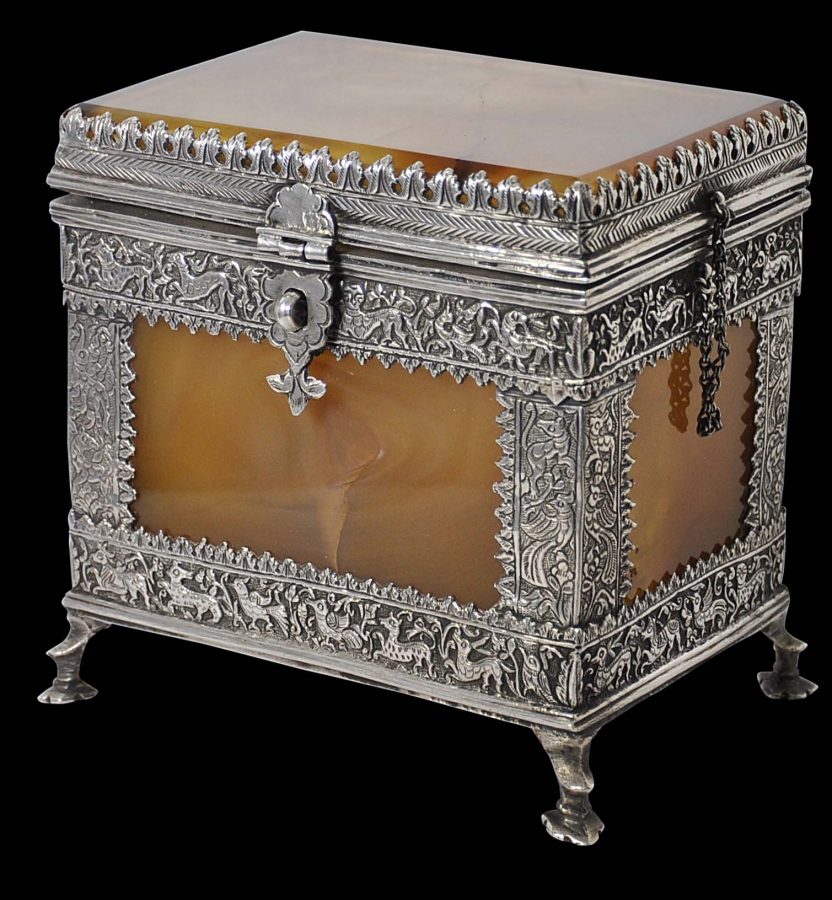This splendid box comprises agate panels held together with chased silver mounts. It is from India, probably the Deccan and possibly Goa, and dating to around 1700.
Each side, including the base, is of a large, flat piece of agate (or possibly closely related sardonyx which has been mined in India for thousands of years), and each side is bordered with silver mounts that have been chased and engraved with birds, cows, and mythical composite animals amid sinuous foliate scrollwork and against a tooled background. A figure of a man appears on one side. The figure could be that of a European or an Indian but in any event is in the process of firing an arrow from a bow.
The silverwork has some parallels with that seen on Goa silverwork but also the form of the animals and foliage is near-identical to that seen on a copper box attributed to the end of the 16th century, Deccan, in the Virginia Museum of Fine Arts and illustrated in Dye (2001, p. 403).
The box sits on four solid-cast and chiselled silver feet. The lid is hinged and retains two original exterior silver chains on either side which support the weight of the lid when it is open. There is a hinged and engraved silver latch which would have allowed the box to be locked. In keeping with the opulence of the box, the underside is set with agate and with silver mounts that also are chased but this time with broad foliate scrollwork which is also seen on 17th century Deccan and Goa work.
The chased silver mounts have their antecedents in items that have been attributed to 16th and 17th century Goa. See Vassallo e Silva & Flores (2004, p. 119), Levenson (2007, p. 263), and Jordan et al (1996) for a variety of examples.
The silver on the box here is also very similar to that on a silver-mounted coco-de-mer box from the Tavora Sequeira Pino Collection and exhibited in the Isabella Gardner Stewart Museum and attributed to 17th century Goa (see Moura Carvalho, 2004, p. 52).
The use of agate is unusual. Many early boxes made for the Indo-Portuguese market were made of tortoiseshell with silver mounts. Wilkinson (2008) however illustrates a ‘Mughal’ silver toilet set ascribed to circa 1740 which has similar agate plaques set into chased silver mounts.
The Portuguese ruled Goa after capturing it in 1510. Thereafter, it became a centre for the manufacture of luxury goods to supply the nobility, aristocrats and wealthy churches and monasteries of Europe with eastern curios and exotica. The purpose of this box is unclear. Most probably it was made for export to the European luxury goods market.
The example here is in excellent condition. The images here are a mixture showing the box with overhead light and back-lighting to show up the fiery, translucent nature of the agate used. The box is a rare, museum-quality piece.
References
Crowley, R., Conquerors: How Portugal Forged the First Global Empire, Faber & Faber, 2015.
Dye, J.M., The Arts of India: Virginia Museum of Fine Arts, Philip Wilson Publishers, 2001.
Jackson, A. & A. Jaffer, Encounters: The Meeting of Asia and Europe 1500-1800, V&A Publications, 2004.
Jordan, A. et al, The Heritage of Rauluchantim, Museu de Sao Roque, 1996.
Jordan-Gschwend, A, & K.J.P. Lowe (eds.), The Global City: On the Streets of Renaissance Lisbon, Paul Holberton Publishing, 2015.
Levenson. J. (ed), Encompassing the Globe: Portugal and the World in the 16th and 17th Centuries, Arthur M. Sackler Gallery, 2007.
Moura Carvalho, P., Luxury for Export, Gutenberg Periscope Publishing, 2008.
Vassallo e Silva, N., & J. Flores,Goa and the Great Mughal, Calouste Gulbenkian Foundation, 2004.
Wilkinson, W.R.T., ‘Reflecting power: Three schools of Indian silver’, 2008.


